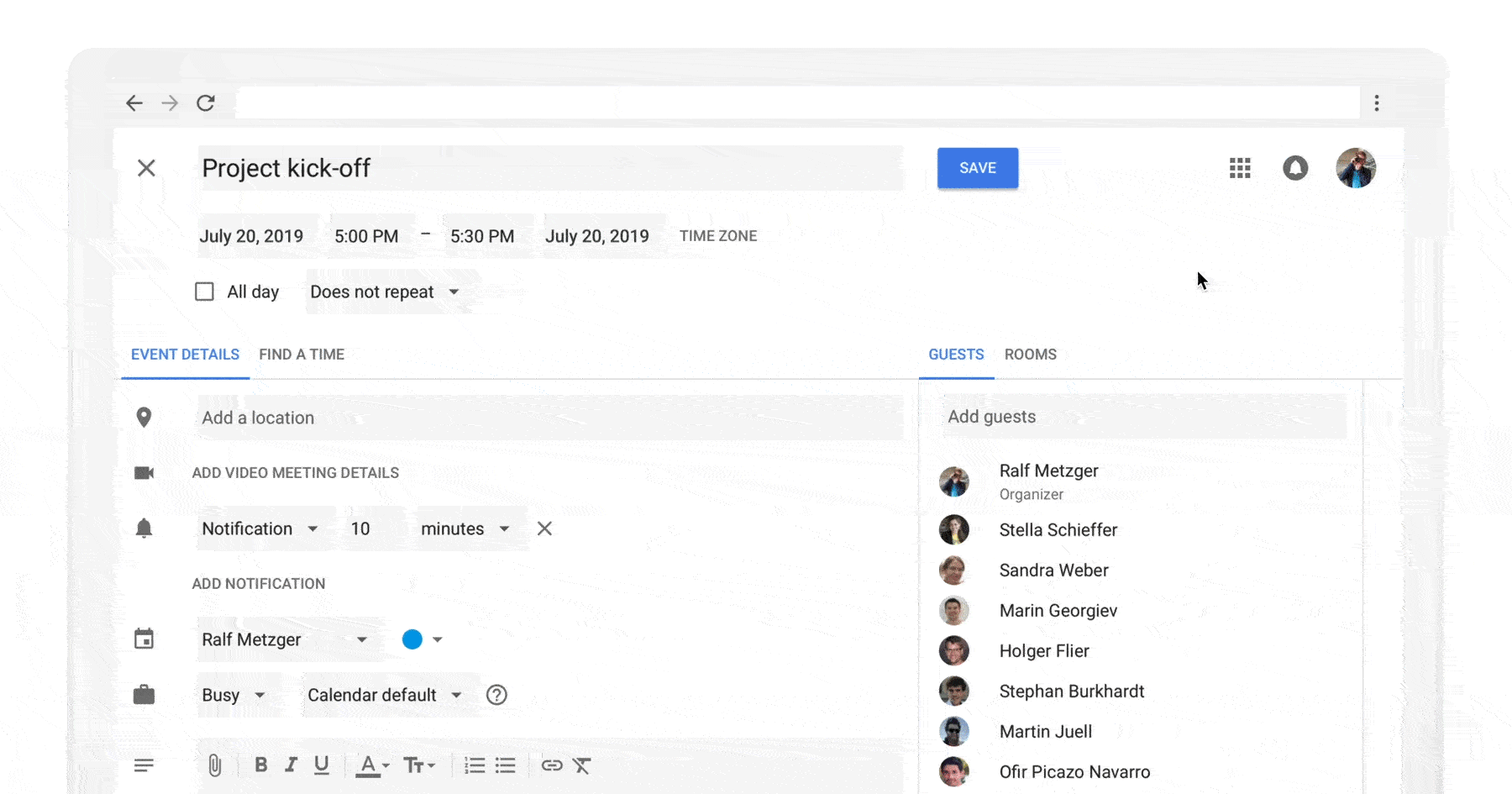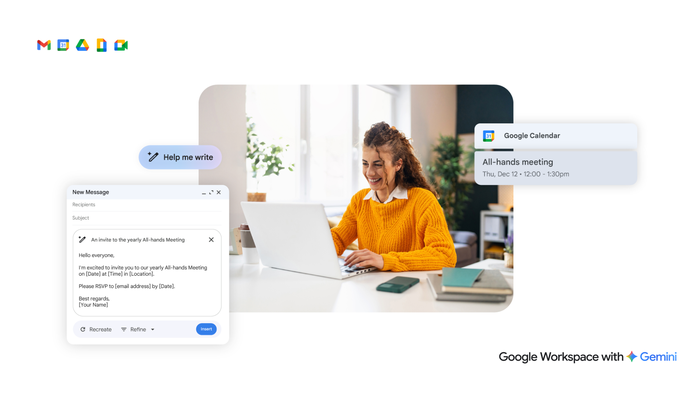Work hacks from G Suite: how to host more effective meetings
Courtney Hampson
Program Manager, G Suite
If you’re looking to raise the bar for your meetings, here are five tips that can help.
Try Google Workspace at No Cost
Get a business email, all the storage you need, video conferencing, and more.
SIGN UPMeetings get a bad rap. Unfortunately, there’s some truth to their reputation—approximately 71% are unproductive, according to a study by the University of North Carolina. We’ve built meeting solutions in G Suite to help people combat ineffective meetings and make the most of their time at work.
If you’re looking to raise the bar for your meetings, here are five tips that can help.
1. Make it convenient.
How many times are you late to a meeting because you can’t find the conference room? This happens especially at large companies where employees often have to walk to another floor or building to join.
If you use G Suite, Google Calendar automatically suggests nearby conference rooms to book for each person listed on the invitation. It also lists equipment available in each room, like monitors and A/V tools, so that you can be prepared ahead of time. To use this feature, your IT admin first needs to register all building locations, meeting rooms, and equipment.


Pro tip: Always add a video conferencing option when you schedule a meeting. This way, if someone needs to join remotely (say they’re running late on public transportation or picking kids up from daycare) they already have the option.
While we’re at it, if a meeting is missing a dial-in number, it can cause unnecessary disruption. To help, Hangouts Meet lets attendees join using telephone numbers that are local in 44 countries.
2. Schedule only the time you need.
It's human nature to fill time in meetings even when you don't have to. That’s why it is important to allocate the right amount of time for a conference call. Calendar gives you the option to choose 15-minute, 30-minute or 1-hour long time slots for meetings (as well as add custom times).
Time is precious—when you book a meeting, be realistic with the time you block. For example, if you think that your meeting can be completed in less than 15 minutes, consider sending a chat or email instead.


Pro tip: You can change your Calendar settings to shorten the default length of your meetings. You can also choose the “Speedy meetings” option in your Calendar settings. Go to Settings > Event Settings and then click the checkbox for speedy meetings. This shortens whichever preset meeting time that you’ve designated by 5 or 10 minutes (depending on the time). So if you have 45-minute meetings as your default, it will block 40 minutes each time you schedule a call.
3. Respect working hours.
Work is increasingly distributed across the globe, which means multiple time zones. It’s also flexible—not everyone works a 9 to 5 job.
Although it can be tempting to grab the first available time slot on a calendar, this often leads to rescheduling or poor attendance. In Calendar, you can add custom working hours to automatically warn others that you’re unavailable if they try to book meetings with you outside of your working schedule.
Pro tip: If you have frequent meetings with attendees in another time zone or if you travel to another country often, add a secondary timezone to your Calendar. You’ll then see all of your meetings in both time zones without needing to do math in your head.
4. Set context and follow up.
Now that everyone is invited, it’s important to ensure that the meeting is productive. Setting context beforehand and following up afterward is key. To help stay on track, create an agenda and capture notes and action items in a Google Doc where everyone can collaborate simultaneously.
When you create an agenda in Docs, you can add it to the meeting event in Calendar instead of sending it over email. This gives teammates an opportunity to add additional items to the agenda before you meet.
In Docs, you can also assign action items. Just +mention someone in a comment and Docs will suggest an appropriate team member to assign the action item to and notify them via email. These are great ways to ensure that everyone is prepared and that action items don’t fall through the cracks. You can also record meetings and distribute the recording so that those unable to attend the meeting stay in the loop.
Pro tip: You can see docs that have unresolved action items you need to address all in one place. In Drive, click the drop-down menu in the search bar. Scroll down to “Follow up,” then select “Action items only.” This shows all of the files where you have unresolved action items.
5. Make it visual.
You can tell a lot about how a meeting is going by “reading the room.” With video meetings, everyone is able to connect face-to-face, even remotely, so you can see firsthand if attendees feel engaged. If you’re hosting a video meeting, try to make it visual for those attending by sharing your screen. With Meet you can share your screen to present agendas, presentations, data, videos and more. When you share, consider sharing only your browser tab instead of your entire browser or screen, so people aren’t distracted by incoming chats or other work.
Pro tip: It’s easy to change the screen layout of your video meeting in Hangouts Meet, like if you want to see a full screen layout with a speaker instead of a tiled layout. Click on the three-dot menu icon on the lower right corner of your Meet screen, and choose between Automatic, Tiled, Spotlight, or Sidebar options.
With good habits and the right tools, we can make meetings less dreadful and more impactful. Learn more about G Suite meeting solutions, or check out more meetings tips and tricks.



